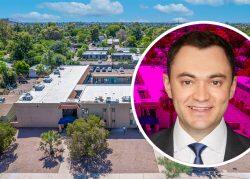The 2022 outlook for investments in the multifamily market in San Bernardino and Riverside counties is stronger than for Los Angeles County, according to a recent report from Marcus & Millichap.
The report, published this week, analyzed this year’s multifamily investment outlook in the nation’s 46 biggest metro areas.
“After a banner period for multifamily properties in 2021, fundamentals are projected to improve even further this year,” it said, “albeit at a more typical pace.”
Marcus & Millichap created an index that ranked 46 multifamily markets across the country for this year’s investment outlook, based on factors that include projected job growth, vacancy rates, rents and historical price appreciation. Orlando came out on top, followed by Las Vegas, Fort Lauderdale, West Palm Beach and Phoenix.
The rankings offered a counter-intuitive view of Southern California, where Riverside-San Bernardino–neighboring inland counties that together are known as the Inland Empire counted as a single market– beat L.A. County. Riverside-San Bernardino ranked 14th out of the 46 markets on the Marcus & Millichap, the highest for any California market, while Los Angeles came in at 23rd.
Marcus & Millichap also grouped the markets into several performance categories covering the past two years, with Riverside-San Bernardino categorized as having seen “strong demand through [the] pandemic,” along with cities such as Charlotte and Phoenix. For the Inland Empire market, that trend came from very low vacancy rates and minimal supply pressure, the firm found.
It was also largely fueled by migration from highly expensive L.A. County. And new residents will continue to move inland, the report predicts, because of the area’s still-lower cost of living and expanding job opportunities.
“Recognized as an industrial hub, the market is expected to add transportation and warehousing-related positions at a consistent pace as new facilities come online,” it said.
The report put L.A. County in the “sustained momentum” category despite relatively strong demand during the pandemic era, along with markets that included Houston, Chicago and Orange County.
“The deeper employment shock from the pandemic keeps Los Angeles in the middle of the ranking despite tight availability,” the report found.
That “tight availability” includes a vacancy rate that recently hit a 20-year low, and the brokerage predicts availability will further tighten this year because of continued strong demand as pandemic-related restrictions ease. The report predicts the L.A. market will add plenty of jobs, allowing for more than 30,000 new households — and that high home prices will make it difficult for many of those households to buy.
“Suburban submarkets, neighborhoods south of Downtown Los Angeles and Silicon Beach should all benefit,” it said, “as more households seek areas of regionally lower rent or proximity to tech hubs.”
The report also identifies an influx of investment to Class C properties in Southeast L.A., Greater Inglewood and Koreatown, and a competition for Class B complexes in L.A.’s Westside and some San Fernando Valley cities.
Read more


